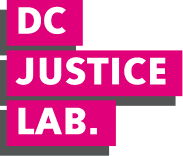repeat arrests
Reducing repeat arrests by expanding treatment would increase safety and reduce harm.
- 5 Minute Read
There are a small number of individuals who are frequently re-arrested and jailed, sometimes from the same locations. They end up going through the criminal legal system over and over without ever being able to address the reasons they are trapped in this cycle. One analysis in DC found these “familiar faces” were re-arrested four or more times in a given year. These individuals have complicated health, treatment, and housing needs and need help from people trained in crisis intervention who can also refer them to appropriate follow up care and programming. DC needs to expand its ability to respond to people in crisis without an arrest, refer that person to a treatment or housing option, and increase the capacity to serve people in crisis.

What you need to know
Familiar faces: repeatedly arrested and jailed, but needing treatment and housing
People with mental health or substance use issues are far more likely to be “familiar faces” and end up unsheltered, arrested, and jailed repeatedly. People with multiple arrests within one year are three times more likely to have been in psychological distress, and half of people arrested multiple times reported a substance use disorder in the past year. Roughly one in five DC residents experiencing homelessness or housing insecurity are also dealing with an undiagnosed or untreated mental illness and/or substance use disorder. Data from 2015 to 2018 shows only 1 percent of the 4,602 cases of individuals incarcerated who had a substance use disorder in DC received consistent treatment before, during and after incarceration. On average, it took more than thirty days for someone in the jail to be connected to treatment.
Repeat arrests drive up costs, and have an unequal impact.
Simply arresting and jailing a person who needs treatment and housing does not solve the underlying crisis that led to their contact with the criminal legal system, but it does drive up costs. Unsheltered people are repeatedly jailed, transported by ambulance, and hospitalized throughout the year. While all taxpayers pay higher costs when we fail to address the crisis, Black residents experience the increased costs plus the harm of criminalization without treatment. From 2015 to 2018, 95 percent of people incarcerated in DC with substance use disorders who did not receive treatment before they were jailed were Black.
Repeat arrests are concentrated around certain places.
There are several locations throughout the District that are known to be arrest hotspots. This actually creates an opportunity to deploy health resources to address these crises and prevent unnecessary and ineffective criminalization. One George Washington University Law School study that identified people repeatedly arrested in Washington DC found there were specific places where police encountered them over and over again, including Metro stations, and grocery stores. In DC, a group of individuals have been identified as being re-arrested four or more times in just one year. One hundred percent of repeat arrests were within half a mile of a Metro station, and the top ten places accounted for 40 percent of all people repeatedly arrested in the review.
save & share ⤴
Models exist, but they are not being used enough in DC
The more effective response to a “familiar face” would be to expand pre-arrest diversion or crisis response programs that can refer a person to treatment, housing or some other support service. But these programs do not have enough funding or staff to meet the need in the community. In 2022, the Department of Behavioral Health reported they had 43 people working for DC’s Community Response Team and had constant challenges staffing the model. On top of not having enough staff, the entire District has only sixteen community-based crisis beds where people can stay for a week or two to receive professional mental health services. While the MPD committed to training all officers in crisis intervention in 2022, less than a third of the force has been trained in this approach.
Addressing the core needs of “familiar faces” would increase safety, and reduce harm.
By expanding pre-arrest diversion, crisis response and reentry programs, and access to housing and crisis beds, DC would have more capacity to respond to people in crisis, reduce crime, and reduce repeat arrests. Co-responses that include police and health care workers can reduce repeated arrests. However, programs in Denver, Colorado and Eugene, Oregon have shown that you can achieve similar results by dramatically reducing the role of police and having community-based organizations and health care workers lead the response. If DC fully implements the use of sobering centers and safe use sites, that would also help reduce the harm individuals experience with drug overdoses and reduce reliance on criminalization.
WHERE TO LEARN MORE
Council of State Governments November 2023
DC’s Crisis Response Coalition
Vera Institute of Justice November 2020
Center for Court Excellence
DC Health Matters Collaborative: May 2021
Prison Policy Initiative August 2019
George Washington University Law School August 2019
Metropolitan Police Department August 2019
Our Solutions
DC Should:
- Require independent review before a third misdemeanor rearrest in a single calendar year
- Increase the number of crisis treatment beds available to residents in need
- Co-locate health services where the need is greatest
- Assign officers with crisis intervention training where the need is greatest
- Make sure every connection to a service happens on the day it is needed
special thanks
Donald Braman ★ Sarah J. Aristil ★ Noah E. Duncan ★ Melissa J. Hopkins




